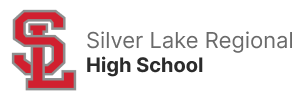Math and Computer Science

The goal of the Mathematics program at Silver Lake Regional High School is to enable students to understand mathematics deeply and use it effectively so as to be college and career ready upon graduation. To help students achieve mathematical understanding, all courses in mathematics emphasize a balance of procedural fluency, conceptual understanding, and problem solving. The philosophy of the Mathematics Department is that students need to be actively engaged in doing interesting and challenging mathematics as they:
- Make sense of problems and persevere in solving them
- Reason abstractly and quantitatively
- Construct viable arguments and critique the reasoning of others
These and five other Standards for Mathematical Practice along with a coherent set of rigorous content standards from the Massachusetts Curriculum Framework for Mathematics (© 2017) are the foundation for each course in the Mathematics Department.
Students must successfully complete four years of mathematics in order to fulfill the requirements of graduation. Three years of mathematics need to be successfully completed in core courses; the fourth year may consist of another core math course or two semester-long electives offered through the Mathematics Department.
Calculator Recommendation: Technology is an essential element in the teaching and learning of high school mathematics. According to the National Council of Teachers of Mathematics, “When technological tools are available, students can focus on decision making, reflection, reasoning, and problem solving.” All students enrolled in mathematics courses must own a scientific calculator or a graphing calculator. Students enrolled in Advanced Placement, honors, or college-preparatory 1 mathematics classes should strongly consider purchasing a graphing calculator, preferably TI-84 family of calculators. It is important for students to gain familiarity with their own calculator in order to use it as a tool during class and for homework. Further, calculators may be used on standardized tests, including portions of the MCAS, PSATs, SATs, and college placement tests.

Want more Math? Join the Math Team!
Faculty
Mr. Dan Correia
Department Chair
dcorreia@slrsd.org
Mrs. Ashley Bosworth
abosworth@slrsd.org
Mrs. Lynne Eagleson
leagleson@slrsd.org
Mrs. Michelle McMillan
mmcmillan@slrsd.org
Mrs. Taylor Paiva
taylorpaiva@slrsd.org
Mrs. Kimberly Prime
kimberlyprime@slrsd.org
Mr. James Rapoza
jamesrapoza@slrsd.org
Mr. Brendan Sarles
brendansarles@slrsd.org
Mrs. Tina Stasiuk
tstasiuk@slrsd.org
Ms. Olivia Sutherland
oliviasutherland@slrsd.org
Mrs. Dawn White
dwhite@slrsd.org
Ms. Meghan Willis
meghanwillis@slrsd.org
Although it will come as no immediate surprise to the technology-savvy students of the current generation, computers have secured an indispensable link among a foray of the social, educational and economical foundations of our society. In the twenty-first century, Computer Science spans the range from theory through programming to cutting-edge development of computing solutions. Computer Science offers a foundation that permits students to adapt to new technologies and new ideas. Our computer curriculum falls into three categories: Computer Science, Digital Media and Software Applications. There are two AP Computer Science offerings. The AP Computer Science Principles course takes a broader overview of computer science. It is an ideal course for anyone pursuing any STEM profession.
Helpful Computer Science Links
Moodle - Computer Science Online Classroom
